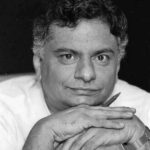
Last month I had written about my short, three-month sojourn at the University of Cambridge in 1983. I had gone there to write a paper on the Latin American debt crisis. Six years later I applied to, and was invited by, Queen Elizabeth House (QEH) in Oxford. I was to spend a year writing a book on the Indian economy. But thanks to the general election of November 1989, I was able to go only for six months in 1990. However, I did start writing the book which was never finished because in 1991 the Indian economy underwent a massive transformation and the old chapters became irrelevant.

Oxford was a completely different experience. To start with it wasn’t half as beautiful as Cambridge. The colleges look nice but the town itself is quite an eyesore. QEH had a large international programme for Indian bureaucrats and other employees of the Indian government. All of us were housed in rooms in a building called the North Oxford Overseas Centre (NOOC) in the famous Banbury Road. It wasn’t a very nice place and I wanted to move out as soon as my wife and two sons joined me. But I think the colour of my skin came in the way and I just couldn’t rent a flat. So the four of us had to make do in a large room at the NOOC. The saving grace was it had a tiny kitchenette and an attached bathroom. But I must mention here that one early morning at around 3am someone threw a brick at our window. The glass shattered into small shreds and the only thing that saved us from injury were the drawn curtains. There was a lot of overt and covert racism in Oxford. I have several stories to tell. Suffice it to say that Oxford was very different from Cambridge.
In Oxford the place where we were housed wasn’t very nice and I wanted to move out as soon as my wife and two sons joined me. But the colour of my skin came in the way and I just couldn’t rent a flat.
It wasn’t all bad though. One Saturday morning I was walking back with some shopping, wearing my usual white kurta, salwar and a khadi bundi, or what is now called a Jawahar jacket. It was absolutely deserted, with not a soul in sight when a taxi stopped on the other side of the road. The South Asian driver called out to me and asked if he could drop me somewhere.
I told him I was almost home but he insisted saying it was because of my clothes. “Dil khush ho gaya,” he said. So I got in and when we reached NOOC, half a km away, he refused to take any money. I invited him for tea. He said he was a Pakistani student. He drove taxis on weekends to earn some money. He told my wife he was always available on weekends — for free! This when tension between India and Pakistan was at an all-time high in the spring of 1990.
There was also a little shop down the road owned by a Bangladeshi man. He was a surly fellow who always seemed annoyed. But someone told me he didn’t know any language other than Bengali. Imagine running a shop in England without knowing the language. He was helped in placing his weekly replenishment orders by two Bangladesh students. He never overcharged Indians. Pakistanis, however, were fair game, as were the locals. He was an absolute godsend for people with small children because he used to open his shop at 6 in the morning and kept it open till 10 at night.
What about the Indian sahibs, then, the babus who were also living at NOOC and attached to QEH? They weren’t a bad lot on the whole but it was amazing how focused they were on freeloading or getting subsidised meals at the huge hospital just across QEH. Suffice it to say they were an embarrassment because the hospital finally complained.





